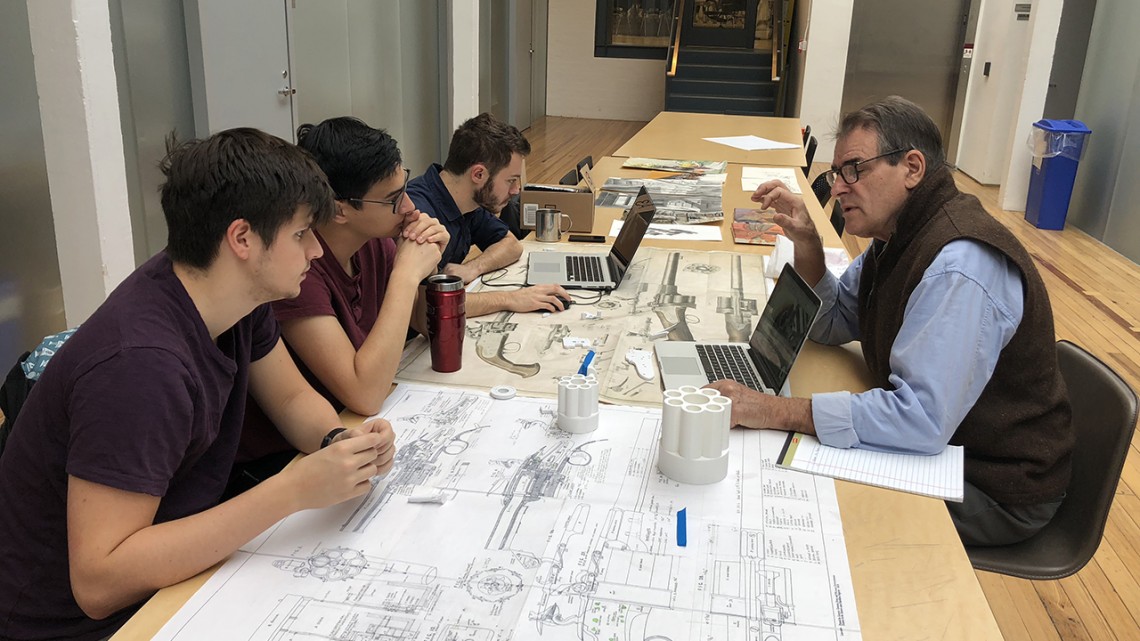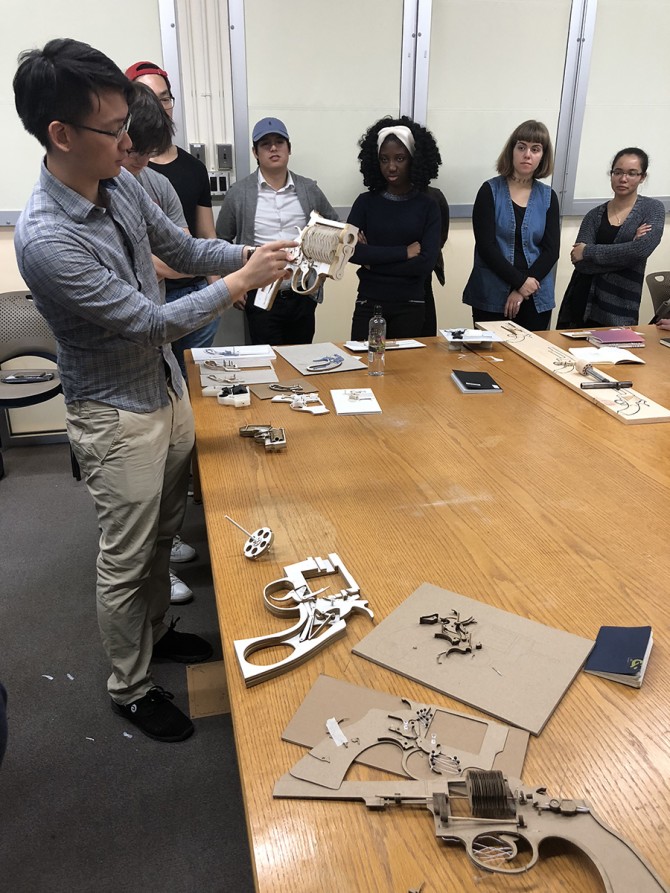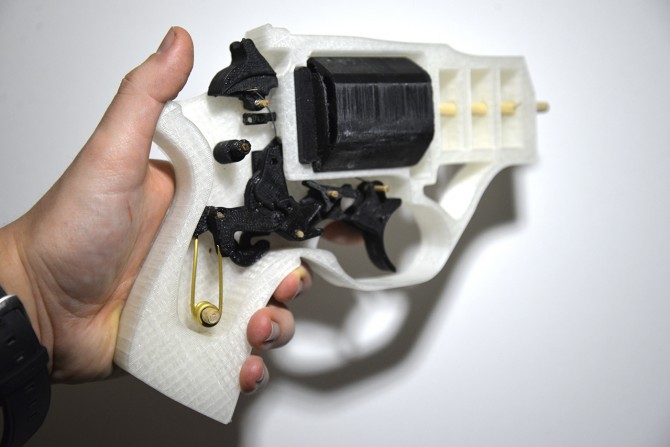
Students discuss modeling gun components with visiting critic in architecture Ben Nicholson, right.
Seminar examines historical, societal impact of guns
By Patti Witten Becca Bowes
Firearms can be considered works of art – indeed, many of the world’s major museums including the Smithsonian, the Metropolitan Museum of Art in New York City, and the Victoria and Albert Museum and The Design Museum in London all have important arms collections that continue to add contemporary firearms.
Yet, despite being the frequent subject of writing and artwork produced in art and design schools, firearms generally remain a taboo subject within academia.
Ben Nicholson, Baird Visiting Critic in architecture, and teaching associate Danny Salamoun, M.Arch. ’14, set out to challenge that taboo and create an understanding of the historical and societal impact of guns, and the connection between weaponry and architectural design, during the fall semester seminar Guns: Myth and Manufacture.
“Architectural design has always been about security, be it from the unwanted gaze or inclement weather, or bodily safety,” Nicholson says. “Public buildings may be vulnerable to everything from truck bombs to sniper fire. Military and civilian design have a long and intertwined history that cannot be compartmentalized, and they both have something to teach the other.”
Each student in the seminar researched one of 17 American revolvers manufactured between 1818 and 2009, examining how the firearm was designed, patented and machined – a methodology of production equally applicable to architecture, “but on steroids,” according to Nicholson.
As the class learned, the pivotal role that firearm manufacture played during the Industrial Revolution was the development of interchangeable parts in American manufacturing, enabling objects that were formerly individually handmade to be mechanically reproduced, resulting in each component being replicated identically. In parallel, the reliance upon self-similar components has also been at the heart of architectural production.
Along with studying the gun’s modern and historical design significance, the students examined gun manufacturing, marketing and their portrayal in movies. For example, Po-Yen Hsieh, B.Arch. ’'19, researched the Smith & Wesson model 29 .44 magnum revolver, the gun used by actor Clint Eastwood’s character in the 1970s “Dirty Harry” film series.
The class was careful to apply an intentional absence of bias to how guns are perceived in both rural and suburban “red state” communities and urban and suburban “blue state” communities. Nicholson points out that the National Rifle Association (NRA) sets the standard for safety training and for competition shooting, and says the NRA’s National Firearms Museum is a valuable repository of groundbreaking manufacturing technologies and invention.
Cornell University Police Sergeant Michael Scott and Officer Theodore Lazcano were generous and active guest teachers in the seminar. They provided a thorough and sobering overview of gun safety, actions that constitute a threat, and active-shooter scenarios, and answered questions on the design of historic firearms. The students learned about the difficult work the campus police do for the university and benefited from their in-depth knowledge of firearm history.
The final project consisted of meticulously constructed cardboard or plastic models of a revolver’s moving parts without actually creating a working firearm. Scott and Lazcano consulted on the models’ legality, and the students created YouTube videos about the revolvers with the intention of contributing unbiased perspectives to the knowledge base available to gun enthusiasts and skeptics alike.
“‘Myth and manufacture’ says it all,” Salamoun says. “Manufacture, because of the interchangeable parts, and myth because of the theory of design – the gun isn’t just an object.”
“Our goal was to send out into the Cornell community students who truly understand guns – their history, their use, and their place in today’s discourse,” Nicholson says. “The key here is for designers to not shy away from what is difficult but to be realistic and embrace both war and civil unrest as they would any other design problem.”
Patti Witten is a staff writer and Becca Bowes is assistant director of communications in the College of Architecture, Art and Planning.
Media Contact
Get Cornell news delivered right to your inbox.
Subscribe


